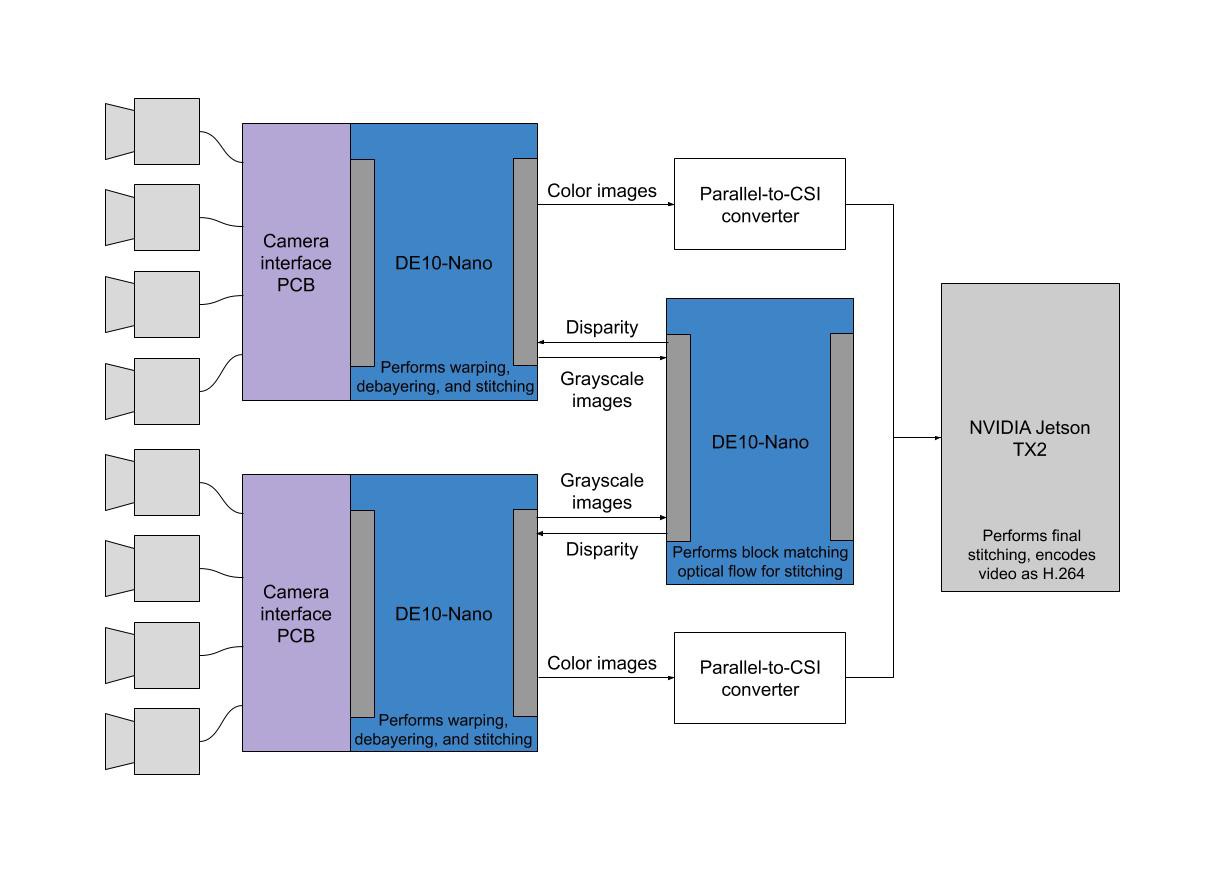The figure below shows the system diagram I came up with after running the numbers on the system requirements. The DE10-Nano is still the centerpiece of the camera due to its high number of IOs, strong FPGA, and low price. I debated using the Ultra96 board, which has high speed connectivity, a faster memory bus, and more powerful Xilinx FPGA, but it wouldn't be able to support input from 4 cameras simultaneously and costs $200 compared to $130 for the DE10-Nano.

So far, I have the front end of the camera mostly working - the PCBs are assembled, and two DE10-Nanos are successfully talking to the cameras and performing debayering and warping.
Discussions
Become a Hackaday.io Member
Create an account to leave a comment. Already have an account? Log In.